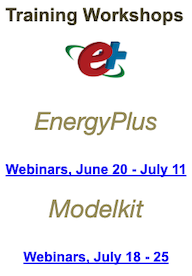Dynamic internal mass in warehouse with EnergyPlus
Dear forum, In the context of a warehouse simulation with EnergyPlus, I would like to take into account the flow of products (massive amounts of wood), which come in at the same temperature all year round, whereas the warehouse air temperature can vary widely (between ~5 and 25 °C). I am interested in air temperature, but also wood temperature. At present, wood is modeled as InternalMass.
- The first possibility that comes to my mind is to model the flow of wood as an internal heating or cooling load, as in this topic, using OtherEquipment and some schedule or EMS script. However, the load would be provided directly to the zone, rather than to the wood.
- Would there be a way to model the effect for wood temperature more accurately?
- Could for instance Construction:InternalSource be used in combination with InternalMass?
- Would it be a viable approach to use a "zone in the zone" to model these wood products?
- Or do you have any other idea on how to model this?





